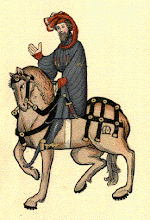Ah uniforms…our goal of taking some new promotional photos has me thinking about them again. I’m on the record as being opposed to requiring them in the IDC and I’m not likely to change that stance at the moment. However, I’ve been thinking about them a fair bit recently. For the most part this is just a theoretical exercise…and I thought I’d share.
From where I stand, there are only two types of uniform that are appropriate for HEMA and HEMA practitioners: the first is modern fencing style, and the second is a traditional or historical style. Both are distinctly European in appearance and both are perfectly adapted for the activity in question.
Personally, I rather like both styles, however I feel that it is important to distinguish students of Historical European Martial Arts from reenactors, and other related groups in the eyes of the public. I am intensely aware of the origins of our arts, and wish to pay homage to that. That said however, I’d rather we in the IDC didn’t look like the ARMA folks.
If we were to utilize a uniform, we would need something that is truly uniform, allows for good motion and doesn’t impede martial intent, it must be serviceable and durable, it must be cost effective, it will let others take us seriously, and yet still pays tribute to the culture that generated these arts. Striking this balance can be difficult, but potentially it could be worth the effort.
As I’ve said before in other articles, while the intentions may be good when one uses historical or historically derivative uniforms, the fact remains that everyone will see you as anything other than a serious martial artist. What's often being used now (sweats, a T-shirt, sports clothes, etc.) are inadequate if only in a promotional sense.
Sports clothes have served those who use them quite adequately, but they clearly do not look like a uniform and neither do they demonstrate a link to the period we are training in to members of the public. If I watch eastern martial artists training in their uniforms I have visual clues to aid my understanding of what I’m seeing, unlike a MOP viewing myself training in my current kit.
My personal preference is for something just a bit more historical, with perhaps some concession to comfort and modern technology. To expand my earlier key points on uniforms, they should be:
1. Functional/durable
2. Athletic appearance
3. Features an homage to historical dress
4. Low cost
5. Suitability for public use (i.e. would you wear it to the pub?)
For everyday training in class, a "practice uniform" could consist of the following:
Shoes should be comfortable athletic shoes-- trainers, fencing shoes, or equivalent.
Trousers should be basic black--any sort of athletic or workout pants (i.e., combat trousers, jogging pants, etc...)
A club T-shirt should be worn at practice.
However, this "practice uniform" doesn’t meet all of my criteria. It lacks any martial connection (east or west), and would require additional elements to be added for some levels of sparring.
The simplest solution to this is, I believe, the use of a traditional fencing uniform. The uniform itself would aid the casual onlooker in, at least, recognizing what they are seeing as a martial activity. The uniform with its unique jacket and breeches is in itself a nod to the past and the proud history of fencing in European culture.
A related point to this topic is protective gear for sparring, and to that end I think that again the fencing uniform fills that area more than adequately. In addition to their intended protection against cuts and punctures, master’s jackets are frequently padded and most jackets could have padding added.
Ultimately if we were to utilize a uniform, this would fulfil our need for something that is truly uniform, it allows for good motion, it doesn’t impede martial intent, it has been shown to be serviceable and durable, cost effective, it is a taken seriously by other parties, and is a clear nod to a rich martial tradition.
